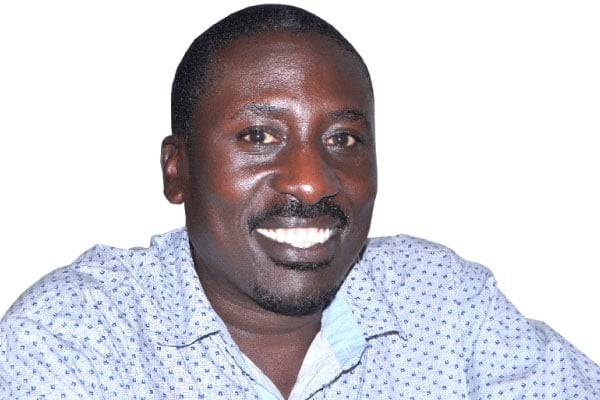Prime
The potential of peace museums as educational and research facilities

What you need to know:
- Demographically Uganda is a young country and most of these folks below 35 years never experienced armed conflicts directly, save for those in greater North and Rwenzori, others do not relate with these conflicts easily and yet many are grappling with their legacies. Peace museums would tell these past traumatic stories in an innovative and interactive ways.
May 18 each year is observed worldwide as an International Museums Day, a very significant occasion for the museums community all over the world.
The 2024 edition is observed under the Global theme, “Museums for Education and Research” and in Uganda, Museums and Monuments, a department within the Ministry of Tourism, Wildlife and Antiquities celebrated this day under the theme” Museums, Shaping Knowledge for the Future”.
The focus of this year’s edition is on Sustainable Development Goal 4 and 9: SDG 4- ‘Quality Education’ aims at ensuring inclusive and equitable quality education and promoting lifelong learning opportunities for all. SDG 9: Industry, Innovation and Infrastructure aims at building resilience, promoting inclusive and sustainable industrialisation and fostering innovation.
Uganda’s effort towards General Museum Development is commendable, however owing to our collective history largely characterised by armed conflicts, the need for more intentionality in specifically investing in a peace museum is very critical.
The patterns, actors ‘real or perceived’ and other factors relating to the different armed conflicts in Uganda have caused deep rifts between or among different communities calling for nation building and reconciliation as one among many other critical restorative options.
For quite a long time, war has been glorified world over through art, music, literature, monuments, and war museums comprehensively detailing warfare and its cost to raise awareness about the reality of war. But does this tantamount to educating people about peace?
Peace museums in my opinion would do a better job spotlighting the depravity and totality of warfare but also furthering the cause and sanctity of peace with focus on cultivating and nurturing the culture of peace, deepening on the message of peace for people to approach, and appreciate as part of their own belief systems. This is what consolidates and sustains peace.
A peace museum would be such a multimedia interactive facility that coordinates peace educational programmes, hosts workshops and seminars meant to deepen the culture of peace and reconciliation, housing a state of art studio that captures, records and archives individual stories of victims of war and a fully stocked library with collection of literature in form of text, audios and visuals on conflict and peace-related topical issues.
The ability to use the traumatic past experiences positively to highlight the need to make and preserve peace distinguishes peace museums from other museums.
This implies that peace museums must be victims/survivor centre, fully involving them through sharing of their harsh conflict realities, artefacts and their correlating desire for peace and justice. This makes such museums very credible and authoritative sources of knowledge and information.
Peace museums do more than just collecting and displaying artefacts, they symbolically represent the past through a critical assessment of war-time past which in the end clarifies contested narratives and sets records straight, thereby promoting trust and cooperation.
Through research, modern peace museums have documented the underlying causal factors of war, highlighting governance deficits and gross violations of human rights. This has scaled up their role to the promotion of liberal ideals of human rights, democracy and reconciliation which are critical in fostering dialogue, influencing behaviour change and ensuring non-recurrence.
Unlike war museums that largely showcases celebratory symbols of the victor and heroism, peace museums are more contemplative and interactive spaces for reflection highlighting more complex realities of the past, bringing out silenced voices, thereby facilitating healing.
Demographically Uganda is a young country and most of these folks below 35 years never experienced armed conflicts directly, save for those in greater North and Rwenzori, others do not relate with these conflicts easily and yet many are grappling with their legacies. Peace museums would tell these past traumatic stories in an innovative and interactive ways.
This performative function gives room for interaction and empathy, which facilitates the learning of the past in a creative way, creating a better present and a promising future.
In conclusion, it should be noted that as we highlight the role of museums in education and research, at the heart is a conviction that prevention of the future violence is possible. It is said that “those who cannot remember the past are condemned to repeat it”.
Peace museums use memory and education about the past to provide moral lessons that encourage a more democratic and peaceful future, however, since museums are shaped by societal interactions, depending on the context, political, economic and social realities may undermine the achievement of this goal as narratives can be reconstructed and shaped in a way that reflect interests and this might skew the desired impact.
But with proper legal and policy frameworks in place, the influence of those other factors including realpolitik with its resources and power structures, peace remain credible and dependable authoritative reference points for education and research and guaranteeing non-recurrence.
There is therefore deliberate need to invest in state of the art modern peace museums so we can use our history, our past, conflicted as it is as a resource for the future.
Mr Jimmy Wamimbi, researcher, social development and transitional justice practitioner.




